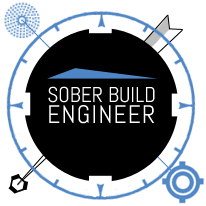Head in the Clouds, Bravo
The FAA, in its infinite wisdom—and, for once, I’m actually not being sarcastic while referring to the concepts of “the FAA” and “wisdom”—allows you to record up to twenty hours of your required forty hours of in-IFR-conditions training to be in a sim. This tends to help out, since flying a sim is around $50/hour (depending on the sim) and flying a real plane is $130+/hour (depending on the plane).
As such, I’ve been putting some amount of sim time in lately, and I think I’ve begun to discover an interesting secret of IFR flying.
Its application(s) to Real Life ™, if any, are left up as an exercise to the reader.
When first learning to fly, most people are overwhelmed. If you can remember back to learning to drive (or to operate any new complicated machinery, really), it’s much the same thing: since you’re not used to knowing what you have to pay attention to, when and what you can just glance at (or even ignore), you tend to overwork yourself, because you’re trying to pay attention to everything.
As with driving, you eventually begin to realize that you don’t need to stare at the oil gauge all the time… and you learn to get a pretty good idea of your speed not by fixating on the speedometer, but rather getting sense of your relative speed by looking at your pitch attitude surroundings, and glancing at dashboard.
In many ways, learning to fly on instruments is that whole lesson over again: I’m finding myself completely worn out after just an hour in the sim, but I’m pretty sure it’s because I don’t quite have down the flow—typically referred to as The ScanTM— for looking at the right instruments, at the right times, in the right order, with the right intervals.
Yet.
One thing I realized last time I was flying the sim, though, was that if you take the time to set the plane up for the flight mode you’re about to enter—the big boys often call this “configuring” the plane—it dramatically decreases your workload.
 Instrument flying is all about a stabilized plane with the right amount of power and (pitch) attitude, at the right times. Kinda like life? |
If you fly by instruments in a specific [model of] plane, one of the first things you figure out is the power settings and pitch attitudes for about six modes of flight (which, off the top of my head are: Vy climb, cruise climb, level cruise, 90-knot level-, 90-knot climbing-, 90-knot descending-flight and… one I’m forgetting). After you figure these out, it becomes an exercise of matching your flight mode to one of these categories.
What’s interesting about the whole thing is I’m beginning to find that you really only need two pieces of data and a properly trimmed airplane to get the desired effect.
My first couple of times in the sim, I found that I’d be concentrating on all the instruments so much, that I’d let one of the parameters—airspeed, heading, or altitude—get out of whack… and then I’d go into oscillation-hell trying to fix it. For instance, I’d let my altitude get off my 150 feet, and I’d correct by pitching down, and find myself 150 feet on the other side… and then I’d pitch up, and overshoot. Rinse and repeat for two nautical miles, pissing off air traffic control the entire time.
The better method is to make sure your airplane is properly trimmed, and then set your power and pitch, making small, controlled pitch corrections if you get off. What’s most amazing about it all is that you have the right power setting and the right pitch attitude for the flight mode you want, hitting the other things that matter—climbing at 90 knots or level flight at 90 knots or a Vy-climb—just fall out. You don’t have to do anything to hit them.
And even more amazing, to switch from the 90-knot flight modes, it’s a power adjustment, and you tend to just hit the 90 knots, at the right vertical speeds.
The only analogy I can think of that is remotely similar is imagining if you had a car that had cruise control stuck on. You’re allowed to program the cruise control to do anything you want, whenever you want, but you can’t turn it off.
My original method of flying was kinda like setting the cruise control, but not really paying to close attention to what I was setting it to and then trying to just mash my foot on the gas to go faster or repeatedly stomping the brake to slow down. Obviously, if the cruise control were locked on, this would cause interesting oscillations, thus taking more of your concentration and reducing the general stability of your vehicle. You’d begin to realize that you have to anticipate changes so that you can let the system and the speed of your car catch up. If you got that down, though, you’d have a lot less of a workload.
It’s really weird to realize that the plane will do all the work for you, a byproduct of aerodynamics and physics, if you let it. You just have to know what two really important things to keep a close eye on, and then crosscheck your other instruments.
It reduces the problem from trying to figure out the right seven or eight possible inputs and having to monitor easily-double that many outputs to modifying three and concentrating on two… which makes the possibility of operating in the IFR environment understandably tenable.
This discovery, which I really only began to grasp the last few minutes I was in the sim last time, has me wondering if such a model is applicable to leading an adult life.
Unfortunately (or… maybe fortunately?), there’s no sim for that… so I’ll just have to try to make sure I keep my wings straight and level.
Both in the air and everywhere else.
